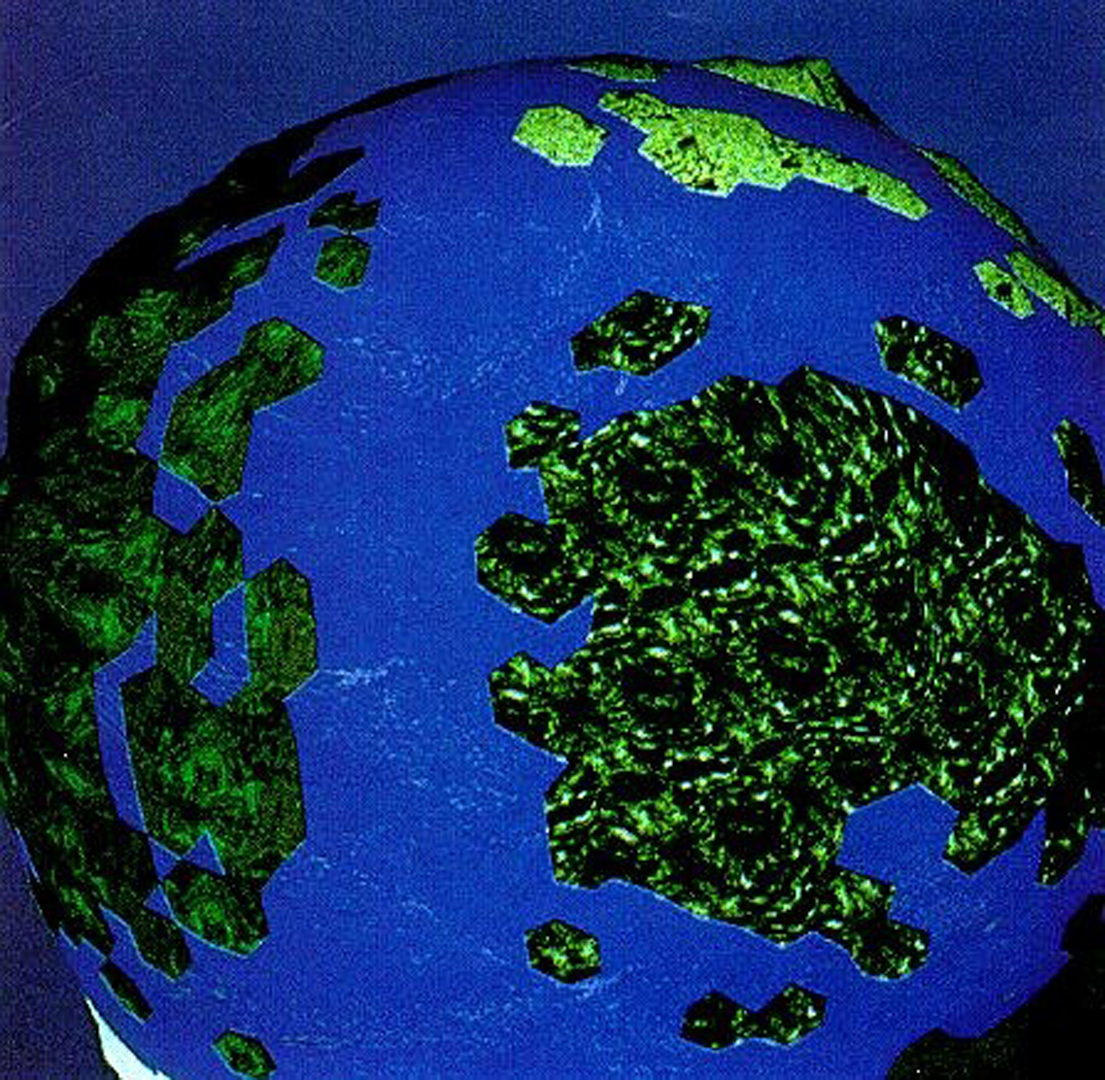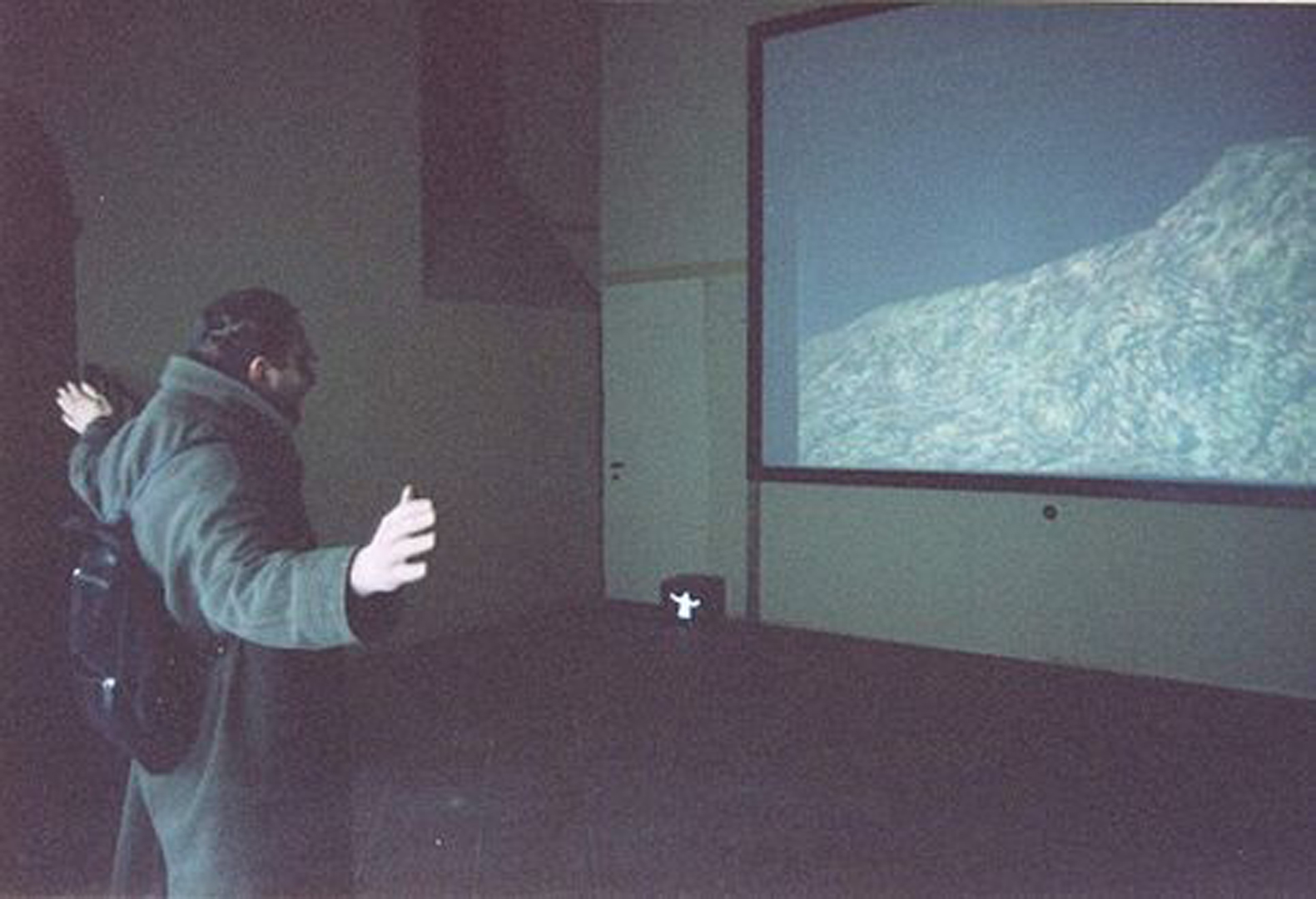Myron W. Krueger: Small Planet
Artist(s):
Title:
- Small Planet
Exhibition:
Category:
Artist Statement:
The Videoplace was conceived in 1969, simulated in 1970, and first exhibited at SIGGRAPH ’85 in San Francisco. Since then, its development has been updated in the SIGGRAPH ’88 and ’92 Art Shows. It is the origin of the concept of a shared telecommunication space and of unencumbered full-body participation with a graphic world through video projection of computer graphics- a format that so far is more attractive to artists than head-mounted displays. In this exhibit, several Videoplace installations will be networked together to allow participants to interact in a single graphic world. This installation is a departure from previous work in that the world portrayed is 3D.
We all know that the earth is round and that anyone who ever thought otherwise was an idiot. At least, that is what we are told. In fact,we have no first-hand experience that tells us that this is true. We simply take the scientists’ word for it.
To make being on a sphere palpable, this environment will shrink the world to a scale that can be circum-navigated very quickly. Participants will stand in front of a large projection screen depicting a realistic 3D terrain. The projection screen will be a portal into that world. Participants will be able to move through that terrain by pretending to fly exactly as a child would-by holding their hands out from their sides and leaning in the direction they want to fly. In addition, they can control their altitude by raising or lowering their hands. When they descend to the ground, they do not crash through it as they would in most virtual reality systems. Instead, they move along the surface.
The navigation of this world is very satisfying by itself, because the means of navigation is so intuitive. Since this is a planet, if participants continue flying in one direction long enough, they will come back to the place they started from. We will construct the world to make it interesting to explore. In addition to exploration, there are other activities possible. For instance, participants’ actions can change the planet as they move around it. They might defoliate the areas that they touch, or, alternatively, barren areas might bloom as a participant passes through. Mountains might rise and fall when a participant raises his/her arms. A variety of interactions will be implemented. These will be distributed around the small planet and will depend on the number of participants who happen to be together in a given part of the world at any moment.
At times, participants can interact in a game of tag or hide-and-seek. Since the representations of the participants will be Z-buffered into the 3D scene, they can hide behind a graphic tree, above a graphic cloud, or down in a graphic canyon. Alternately, they can cooperate in tasks such as herding animated creatures, shaping the planetary landscape, or spreading graphic vegetation.
While individuals participants do not always need to see themselves on the screen, a representation of them will be displayed at their location in the world so they can interact with other participants. Whether this representation is a polygonal representation, a silhouette, or a live video image is an aesthetic trade-off with terrain complexity.






